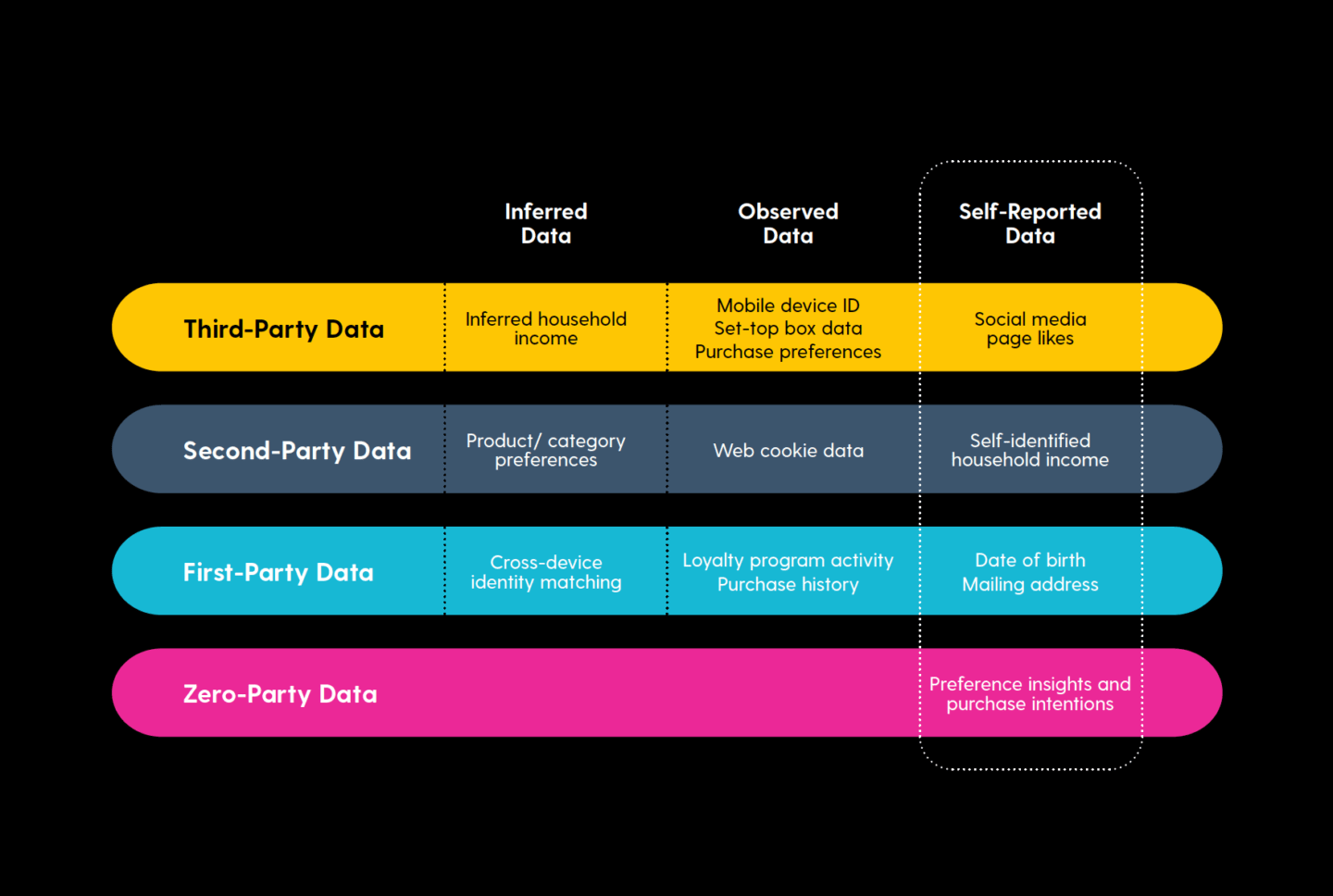Today, marketers are more and more looking into “zero-party data.” Some have even concluded that zero-party data will be the primary source to drive personalization efforts.
What is zero-party data, and why is it important? Let’s take a look.
The change in the concept of privacy has made it more difficult for marketers to foster and sustain relationships with customers. Consumers, nowadays, have become more and more data-conscious. This has led governments to implement various privacy regulations on local and international levels. Therefore, the move away from third-party data has started to happen. Third-party data (e.g., social media likes) was essential for successful B2C marketing campaigns.

What is the issue with “third-party data”?
In a nutshell, third-party data is obtained from sources or sites that the marketer doesn’t own. It often includes demographic information.
Third-party data has become overly unreliable, and its usage is viewed negatively as it frequently is collected from unrelated sources, such as cookies, click trails, likes, etc. Since consumer preferences, financial situation, household sizes, etc. change, the data obtained becomes irrelevant and useless. It, therefore, hampers the effectiveness of marketing campaigns.
Is “first-party data” reliable?
When it comes to personalization, marketers often talk about first-party behavioral data, which includes customers’ site-wide or app-wide behaviors. First-party data can give a valuable insight into an individual’s previous intent and interests. It also contains transactional data (past purchases, downloads, or sign-ups), mailing address, or date of birth. All this information is valuable; however, it cannot tell you much about the purchase intent, as it is based on purchase history.
Acquisition of first-party data is essential in fostering a stronger relationship with a customer. However, aspects such as interests and future purchasing patterns are gleaned from past buys. Therefore, by knowing the past behavior, marketers can only assume the future purchasing patterns. It may lead to poorly targeted ad campaigns.
Spamming customers with adverts for items that they have already bought can damage your brand’s reputation. And push your customers away from your brand.
How can “zero-party data” come in handy?
In simple terms, zero-party data refers to data a consumer has voluntarily and proactively given to a company. Given for the purposes of marketing to them in a more personal and meaningful way. Therefore, marketers can exactly know what consumers intend to purchase or do in the future.
It is simple – don’t assume what a consumer will do. Instead simply ask and, therefore, collect the necessary data through direct engagement with their consumers.
However, in order to obtain zero-party data, brands have to establish a trustworthy relationship with their consumers. If they trust the brand and find interactions with it valuable, they will willingly and proactively share. The insights obtained are then be used to power personalized marketing campaigns. They should span different stages of the customer lifecycle and cover different touchpoints.
Quite seamlessly, zero-party data permits brands to establish direct relationships with customers. In return, brands will better personalize their marketing services and campaigns, so that these consumers could find product recommendations more valuable and relevant. Since the data is given by the consumers themselves, there are no intermediaries nor assumptions. And therefore, brands can drastically improve their customer experience through personalization.
How can marketers collect “zero-party data”?
Obtaining zero-party data should not be a challenge if brands have built trust with their consumers. However, they won’t simply share the data via tedious forms or surveys.
Engage and entertain today’s consumers. It is great if your brand can also give something in return for their time and attention. Your brand can offer an interactive experience that has two purposes – you can conduct your research while simultaneously delivering an enjoyable experience with a tangible benefit in exchange.
Use questionnaires, polls, quizzes, social stories, and leverage these interactive experiences to collect zero-party data seamlessly and at scale. Remember to incorporate incentive mechanics so that your customers are more inclined to participate.
At DiALOGiFY, we provide interactive chatbots that will gamify the data collection and naturally engage with your customers through a highly personalized dialogue. You will be able to collect zero-party data and build a stronger bond with your customers in a seamless way.
By capturing customer motivations, intentions, preferences, and interests, you can genuinely personalize each customer’s experience. By doing so, your brand will gain a significant competitive advantage and will know your customers unquestionably well. Having such data in your hands will empower you to make the right connections with your customers. Nevertheless, such data will help you improve your products or services as you will collect accurate information on what your customers look for and what they actually need.
We have worked with multiple brands that used gamification and incentives to drive direct engagement with their consumers. Such engaging interactions permitted these brands to gain valuable information about their customers, as well as elevate their customer experience. If you wish to know more, download your free Guide “The definitive Guide to Conversational Marketing Factory by DiALOGiFY”.
